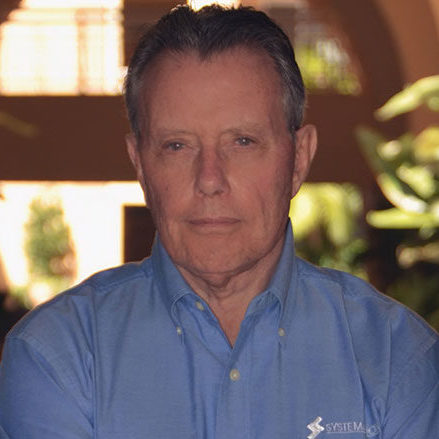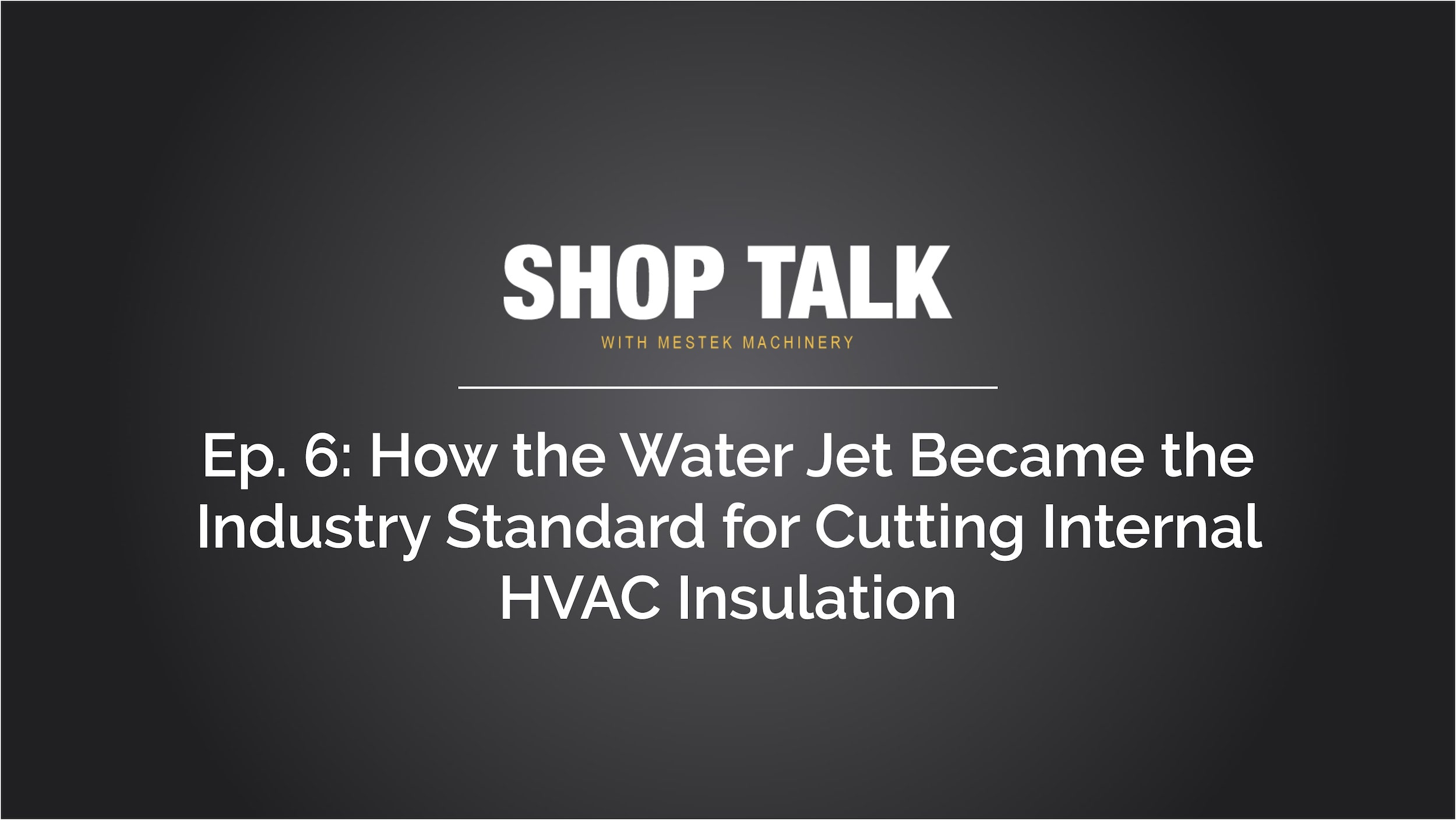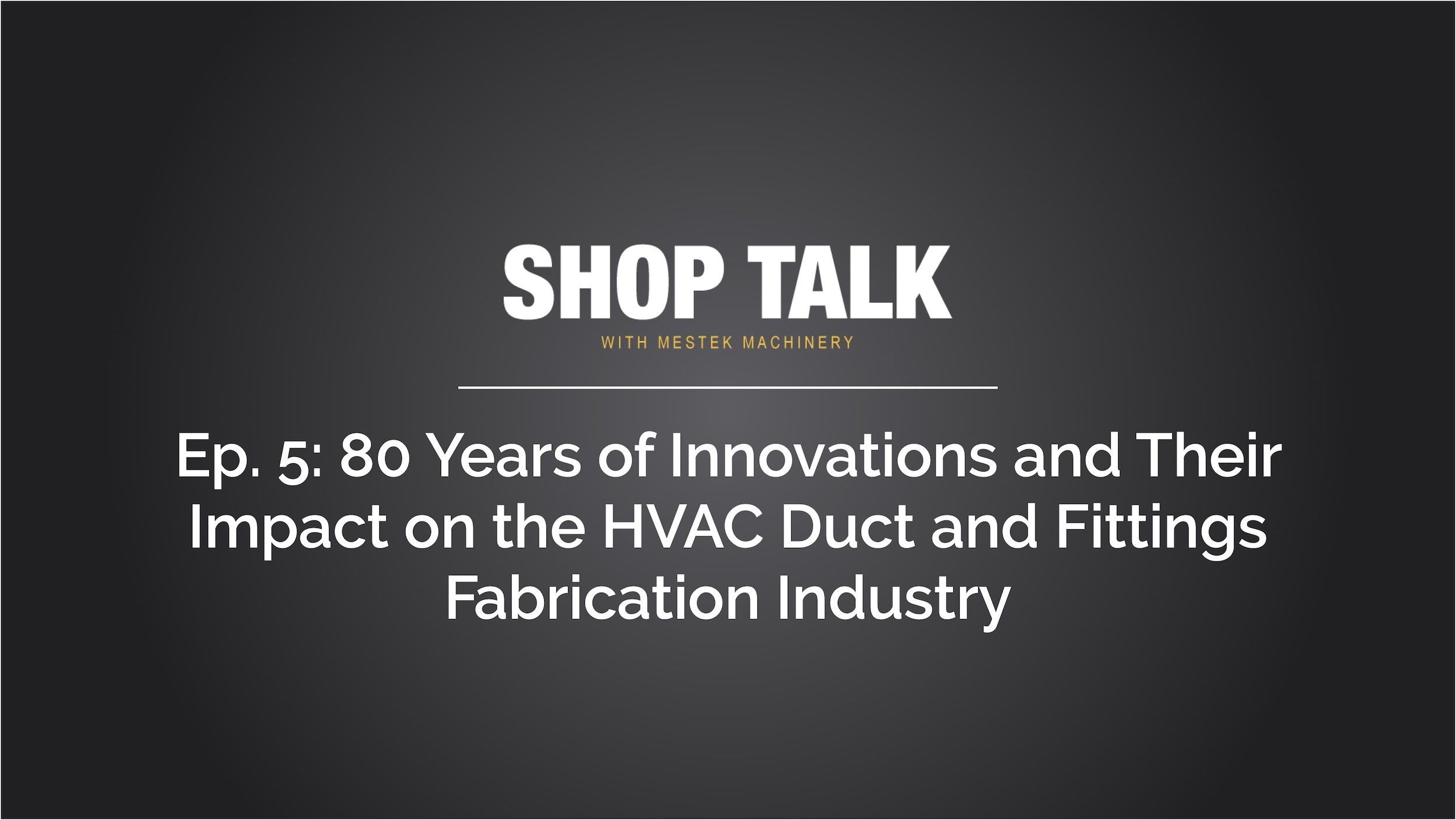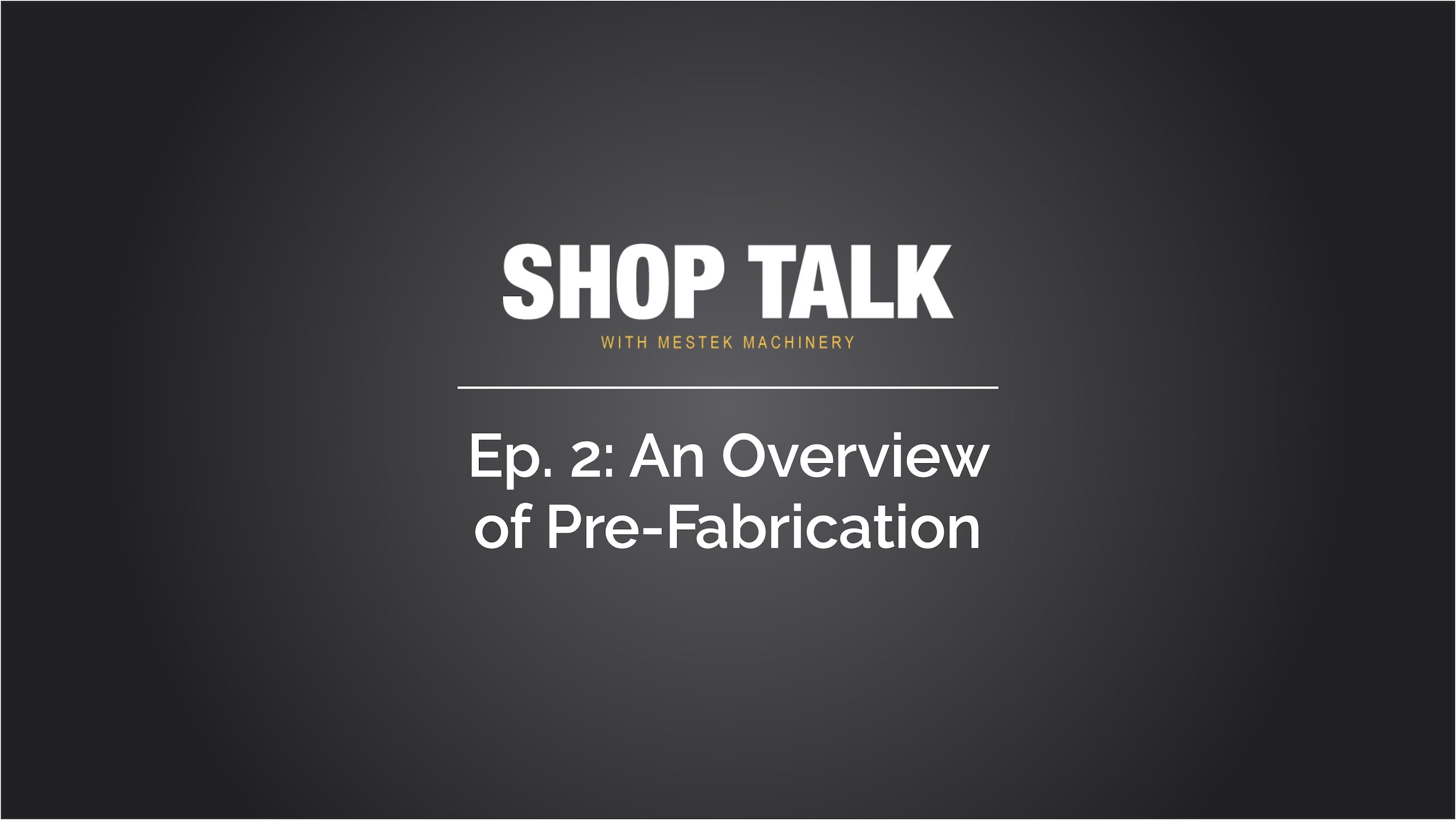Welcome to Shop Talk with Mestek Machinery — where we discuss the topics that matter most to the fabrication shops, contractors, and anyone else in the HVAC duct and fittings fabrication industry as you look for ways to improve your operations.
In this episode, John Welty is joined by Mike Bailey and David Daw and they take a look at the development of the fiber laser for HVAC duct and fittings fabrication and how it has become accepted in the industry. You’ll hear some interesting stories about how this technology has found its way into the industry and how the plasma machines still have a place as well. As we did with our look at the how the water jet became the industry standard, our look at 80 years of innovations in HVAC duct and fittings fabrication industry, and our review of the evolution of software in the industry, we think this look back in time will provide a lot of context for how the industry continues to evolve. And as you begin to evaluate if a fiber laser or any other piece of equipment is right for your operation, please remember that we’re always here to help. We’d love an opportunity to help you achieve your objectives so please don’t hesitate to reach out for a consultation. There’s absolutely no obligation — we’ll simply get some information about your operation and what you’re looking to do and see how we can help.
Meet the Panelists

John Welty
Owner | Welty Automation
- Welty Automation is a strategic partner providing machine automation and engineering support to Mestek Machinery
-
Started at Iowa Precision Industries in 1996 on the drafting board
-
Software development progressed within engineering, and then the factory, and now the HVAC Ductline controls

Mike Bailey
Senior VP of Sales | Mestek Machinery
- 27 years in the HVAC duct and fittings fabrication and sheet metal fabrication industries
- Bachelor of Science Degree | James Madison University
- Helped develop Premier Partner Program with SMACNA
- Partner to Trimble and Applied Software Cad to Cam Processes

David Daw
President | HVAC Inventors Systemation, Inc.
- Product Development consultant to Mestek Machinery
- HVAC fabrication industry technology inventor for over 50 years
- Inventor of Cornermatic corner inserter machines, specialized TDC and TDF corners, and Bendermatic (expected to hit the market in mid-2022)
Watch the Video
Listen to the Podcast
Read the Transcript
Well, I’ll take the beginning. I remember the ASHRAE show in Chicago, 1981. We had a scribing machine that was, again, I think it mentioned this in the CAM development, but it was developed by CTI Construction Technology, out of Elmsford, New York. And all it did was nest the fittings onto a four by 10, five, eight piece of sheet metal that didn’t cut it, but it scribed a pattern on nesting the fittings, which back, manually would be done with these patterns and layouts by an operator. But not only it was a fast, but it nested the fittings, saving all kinds of scrap. The next step in this was to add a laser that would cut it, and that was done about a year later. So timelines were ’81 and this was a 250 or $240,000 machine, which was a lot of money. It’s still a lot of money.
That was just the describing part. The addition of the laser was another 150. So you had about a $400,000 investment. They sold at least three, that I know of, maybe four. And I remember Allied Sheet Metal in Seattle that got the first laser attachment. It never worked. The sensitivity of the lasers and the cut. Part of the problem, as I understand, was the other machines that were on the floor, duct lines and press brakes were giving a vibration, that it would shut off and disturb the cut. So some contractors would actually cut and isolate with a new concrete slab to separate the laser from the cutting table. It still didn’t work.
So ultimately, all four or five of these machines just crashed, the whole system crashed under its own weight. There are some personalities involved, Dick Levine who ran construction technology was an interesting character. But what he didn’t know and what the industry didn’t know, is that about the same time, there was a company out of Boston, Massachusetts called Cybermation, which was developing a plasma cutting process. And when they hit the market in ’82 with $140,000 a table, that was it. It was over. So that initial laser cutting actually started in the early eighties and because of technology and other issues, it just never took off. And the industry thought it died for decades until 2010, was it?
Lockformer | Vulcan Fiber Laser Cutting System
Demo
Lockformer | Vulcan Fiber Laser Cutting System
Vulcan Fiber Laser Cutting System vs. Plasma Table
Sure. Yeah, it’s cool to touch because that’s the interest guise on your downstream roll formers, that it’s a laser cut, so it’s a fine cut. So that does help with the downstream equipment as well. So there’s infinite things to look at when you’re looking at this fiber laser and why you should be curious about it. And then we talked in another segment earlier today about water jets and how we’re cutting insulation at 1200 inches a minute. Well, now we can match the metal cutting with the insulation cutting because a 24 gauge on this fiber laser, it’s about what we’re running, about 1100 inches a minute. So I’m getting my product through the shop quicker now. Production. And then the labor, that human element’s taken out it.
And face it, every owner’s going to tell you where he makes his money is the straight duct coil line, that’s where his money’s being made. Where he’s trying to limit liabilities is in the fitting area. And now that’s what we’re trying to do here, is we’re trying to get into these roll formers and get into the fabrication, almost three times faster than we once would with the plasma. But we have a lot of different segments to the market that laser’s just not going to be applicable. And so we still know there’s a great need for plasma and we still have a lot of volume when it comes to tables going out around the country.
Lockformer | Vulcan Fiber Laser Cutting System
Testimonial: Joseph Lansdell — Poynter Sheet Metal
Lockformer | Vulcan Fiber Laser Cutting System
Testimonial: Jack Knox — R.F. Knox Co., Inc.
Lockformer | Vulcan Cutting System CAD • CAM • MEP Software
Testimonial: Greg Pickens — ADJ Sheetmetal, Inc.








